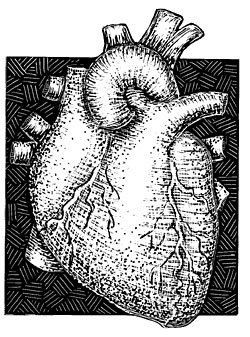Grand Rounds
Clerkships on ICE By David W. Nierenberg, M.D., and Eric A. Shirley, M.D.
Medical schools aim to train their students to become competent and compassionate doctors. But it's a challenge for the curriculum to keep pace with the ever-accelerating evolution of the science and the art of medicine.
This past year, Dartmouth Medical School began to redesign its third-year program, the main clinical year when the core clerkships are offered: inpatient medicine; surgery; pediatrics; psychiatry; ob-gyn/women's health; family medicine; and outpatient medicine, plus neurology or an elective. In the process, we have created a new required course called Interdisciplinary Clinical Exercises (ICE).

|
|
It's a challenge for the curriculum to keep pace with the everaccelerating
evolution of the science and the art of medicine,
to prepare our graduates to practice in the 21st century. |
Flexibility: The faculty and staff found that our earlier structure for year three—three 16-week blocks, each containing two or three clerkships—was too inflexible. But there was one feature that seemed to work well: a series of instructional days devoted to exploring interdisciplinary topics. We wanted to preserve that feature. So as we improved the third-year program by creating more flexible, easier-to-schedule, eight-week clerkship blocks, we further shortened each block by a few days to make time for the new ICE course.
ICE is presented in six three-day sessions—one at the end of every eight-week clerkship—and has several advantages that were not available to us before. Through ICE, we can continue to offer previously taught interdisciplinary topics, and we have been able to introduce new ones as well. In addition, the new course is the home of our successful series of objective structured clinical examinations (OSCEs) and includes topics to help students prepare for Step Two of the threestep national medical board exams, formally known as the United States Medical Licensing Examination (USMLE). And, perhaps most important, ICE brings the class together more often, thus ensuring that third-year students won't be dispersed for an entire year.
We hope that the 80-hour ICE course will better prepare our graduates to practice medicine in the 21st century. It helps us present topics during times when students are most ready to learn them—after they have begun to work with patients in the health-care system on a daily basis. We are using a variety of instructional techniques, such as lectures, seminars, panel discussions, small-group discussions, handson training, interactive computer exercises, and the Web-based Blackboard instructional system for online quizzes and presentation of course materials.
Multidisciplinary: ICE also absorbed some of the multidisciplinary topics that were integrated into the older 16-week clerkship blocks: HIV and AIDS; radiology; pain management; evidence-based medicine; the U.S. health-care system; quality improvement in medical practice; end-of-life issues; the personal, social, financial, and community aspects of managing a patient with a chronic illness; evaluating and treating patients with substance-abuse disorders; and managing an office-based practice.
New multidisciplinary topics that we have been able to add include clinical human genetics and the Human Genome Project; roles of non-physician members of the health-care team; an interactive, case-based presentation on complementary and alternative medicine; sexual health; "Age Day," to make students aware of the issues most important in the care of elderly patients; hands-on training, using mannequins, in how to draw arterial blood and gas specimens and how to insert a nasogastric tube; and occupational and environmental medicine.
The ICE course is also helping students prepare for Step Two of the USMLE—which focuses on their understanding of clinical issues—by providing an overview of common ophthalmologic problems; a review of ear, nose, and throat topics; and an overview of common dermatologic conditions. In addition, the class is briefed on the residency application process, offered insight into the fourth year at DMS, and encouraged to share reactions to ICE with the associate and assistant deans.
Feedback: An important part of the education and evaluation of medical students is the OSCEs, whereby standardized patients (people trained to act like real patients) provide feedback on students' history- taking and physical-exam skills as well as on their ability to establish rapport. This year we incorporated a more diverse set of cases designed to mirror students' two most recent clerkship rotations. This will be especially valuable, because a clinical skills examination is about to be incorporated into Step Two of the USMLE.
Feedback on the ICE course has been excellent. Students have appreciated the variety of topics offered and have enjoyed the Webbased evaluation system and the Web-based exams that can be taken at their convenience. They also like having the opportunity to reconnect with classmates and renew friendships. And now they have the opportunity to share their "tips for success" in clinical clerkships with each other.
In summary, the inaugural year of the new third-year curriculum and the ICE course has clearly been a success, and we look forward to enhancing it in the coming years. �
"Grand Rounds" covers a topic of interest to the Dartmouth medical faculty. Nierenberg, a professor of medicine and of pharmacology and toxicology, is the senior associate dean for medical education, and Shirley, an associate professor of medicine, is the assistant dean for medical education and the director of the ICE course that is described here.
If you would like to offer any feedback about this article, we would welcome getting your comments at DartMed@Dartmouth.edu.
